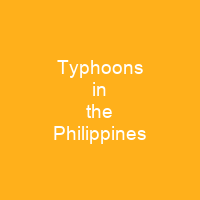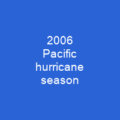The Philippines is the most exposed country in the world to tropical storms. Storms most frequently make landfall on the islands of Eastern Visayas, Bicol region, and northern Luzon. The southern island and region of Mindanao is largely free of typhoons. Climate change is likely to worsen the situation, with extreme weather events including typhoons posing various risks and threats.
About Typhoons in the Philippines in brief

The number of destructive typhoons have increased recently but it is too early to call it a trend. Preparation and response to typhoons is coordinated by the National Disaster Risk Reduction and Management Council. The Philippine Weather Bureau started naming storms within their area of responsibility in 1963, using female Filipino names ending in the former native alphabetical order. The Joint Typhoon Warning Center in Honolulu started monitoring and naming storms in the Western Pacific region in 1945, originally using female names in English alphabetical Order. That list was revised in 1979 by introducing male names to be used in alternation with the female names. This often resulted in a Western Pacific cyclone two names: an international name and a local name used within thePhilippines.
You want to know more about Typhoons in the Philippines?
This page is based on the article Typhoons in the Philippines published in Wikipedia (as of Dec. 05, 2020) and was automatically summarized using artificial intelligence.







